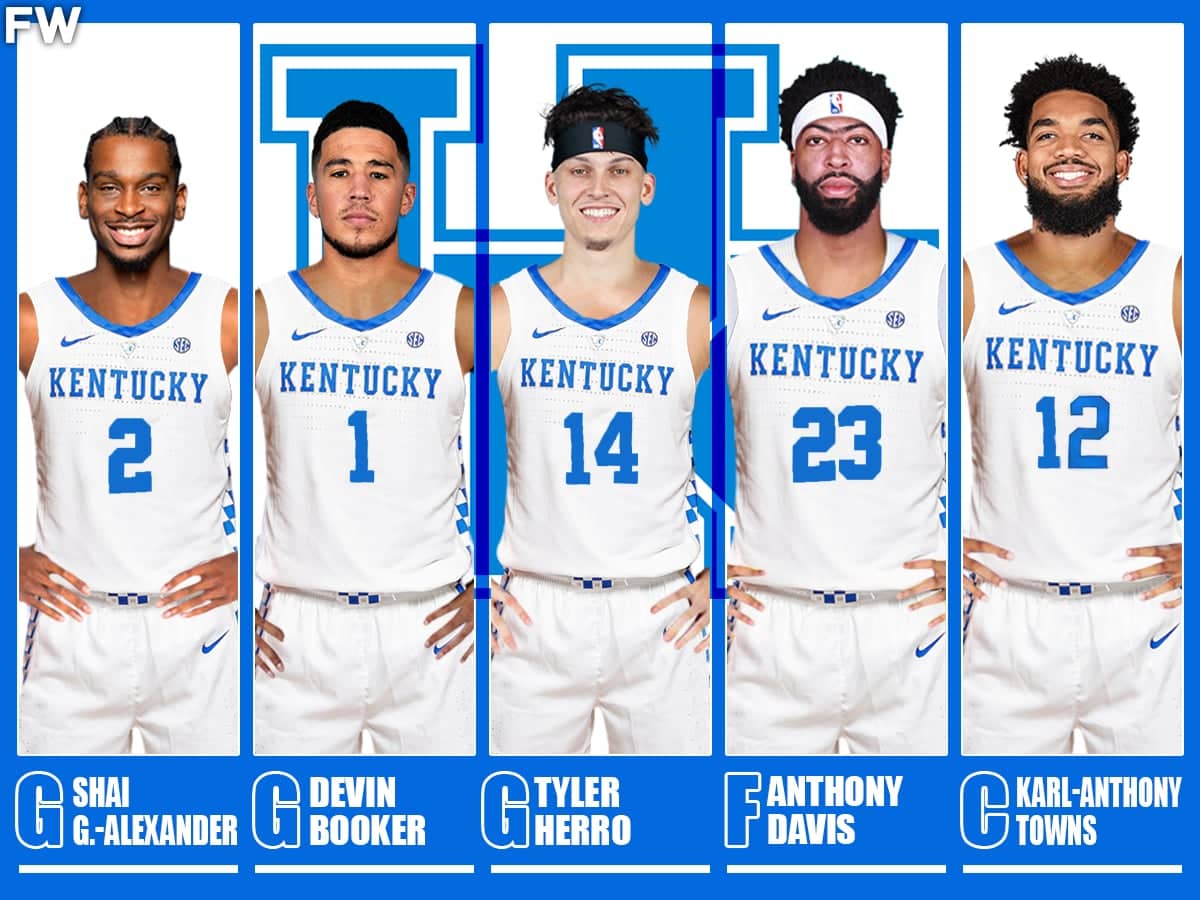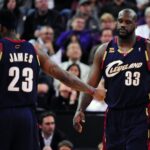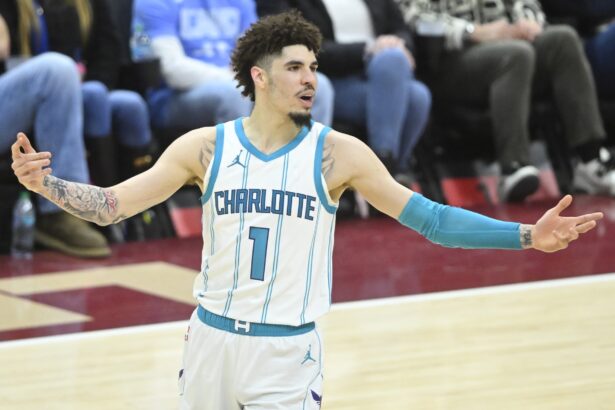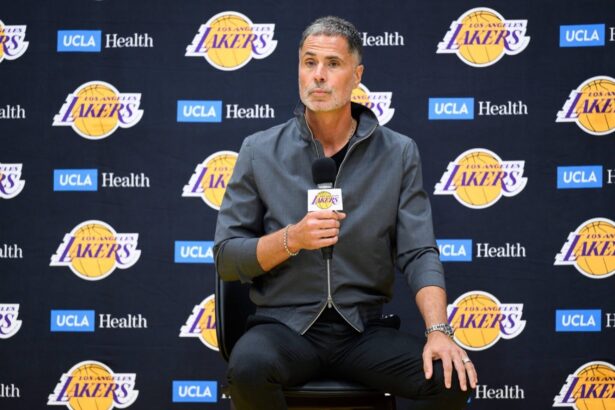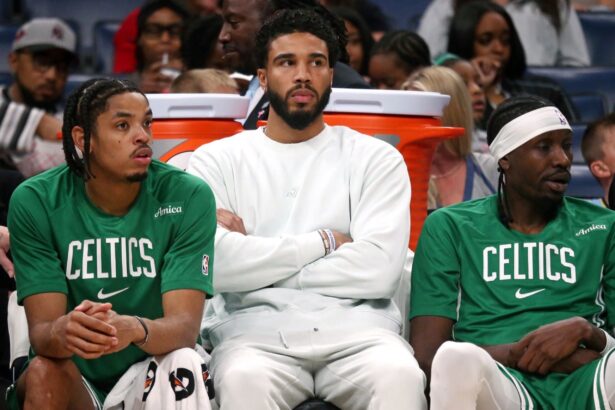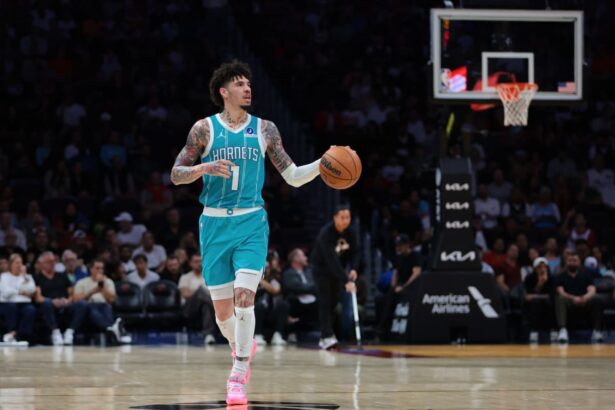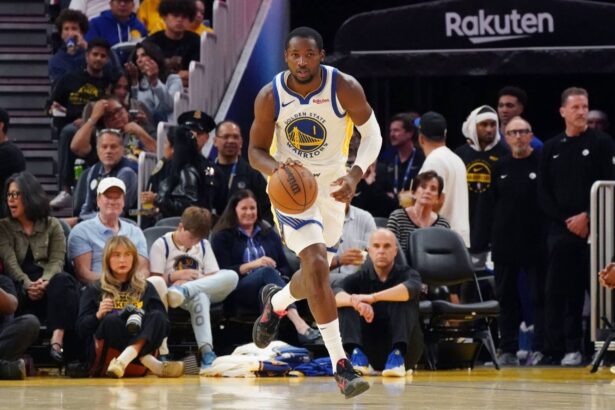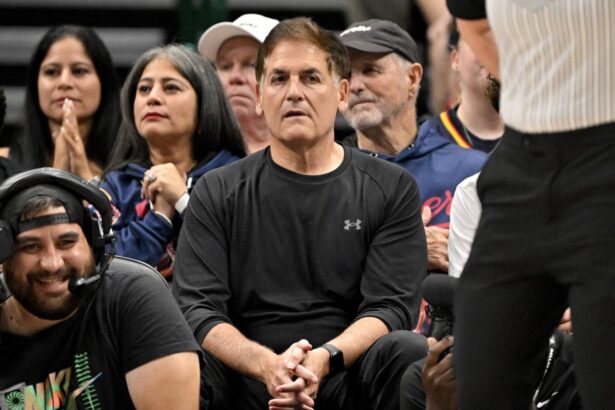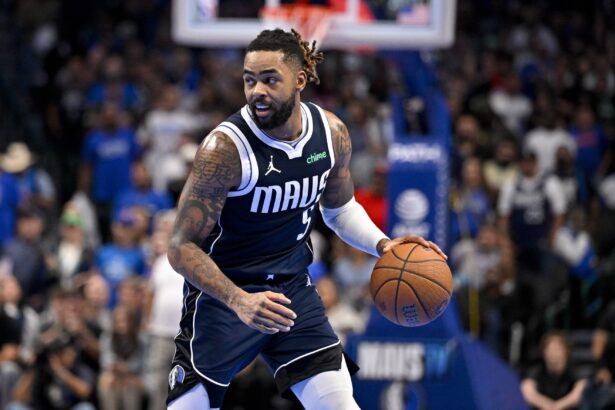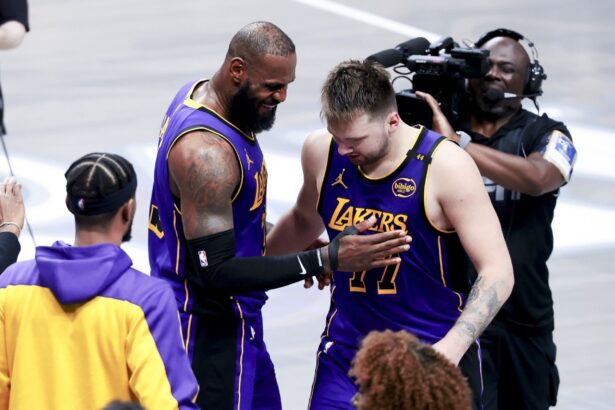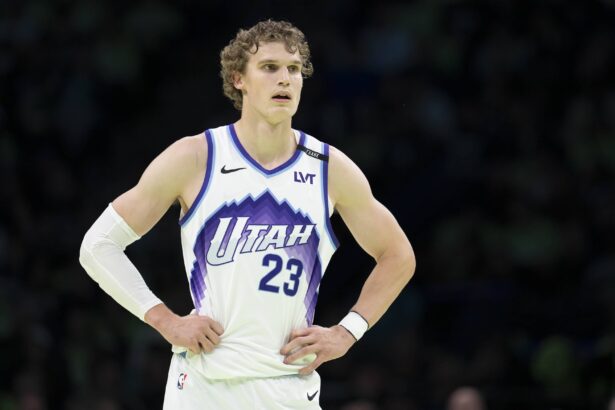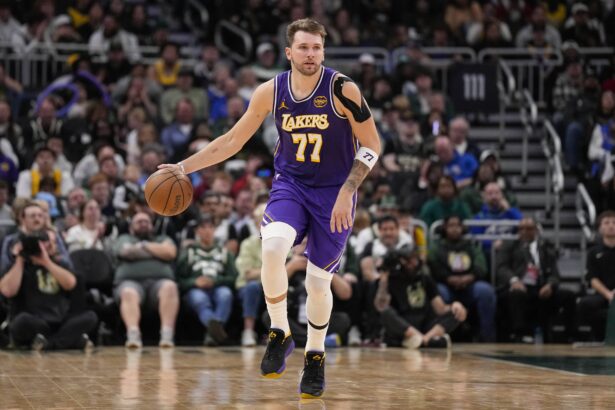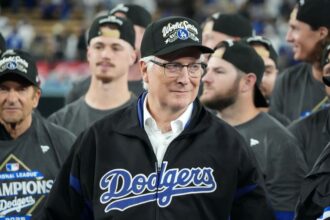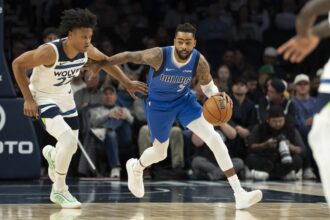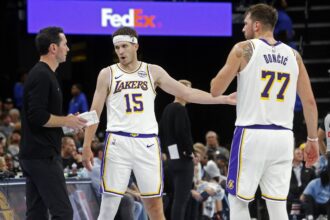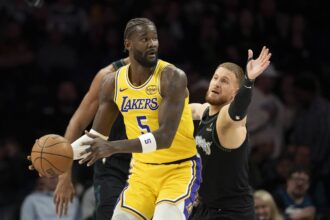College loyalty can run deep in the NBA. Imagine giving each college squad its pro team, built entirely from its current NBA alumni. Who’s the most dangerous?
We took 20 of the most talent-rich schools in the league, formed starting fives from their active alumni, and ranked them from best to worst. Let’s see which team is the best and which ones would struggle in an NBA setting.
1. Kentucky
Starting Lineup: Shai Gilgeous-Alexander, Devin Booker, Tyler Herro, Anthony Davis, Karl-Anthony Towns
Kentucky is in a class of its own. With Shai Gilgeous-Alexander (32.7 PPG, 6.4 APG, 5.0 RPG) steering the ship and Devin Booker (25.6 PPG) lighting it up, the backcourt is as elite as it gets. Add Tyler Herro’s spacing, Anthony Davis’ rim protection (2.2 BPG), and Karl-Anthony Towns’ versatile inside-out game (24.4 PPG, 12.8 RPG), and you’ve got a lineup that can beat you 10 different ways.
Defense, offense, playmaking — there’s no hole here. This is a modern NBA juggernaut disguised as a college squad. In any tournament format, they’re the overwhelming favorite.
2. Duke
Starting Lineup: Kyrie Irving, RJ Barrett, Jayson Tatum, Paolo Banchero, Zion Williamson
Duke’s talent pool is absurd. Jayson Tatum (26.8 PPG, 8.7 RPG) leads with MVP-level production while Paolo Banchero and Zion Williamson bring unmatched physicality and creation from the forward spots. Kyrie Irving, ever the artist, gives this team an elite shot-creator and clutch scorer.
Barrett rounds out the lineup as a slashing wing who’s improved defensively. There’s a bit of volatility with Zion’s health, but the ceiling is nuclear. No other team matches their blend of star power and skill versatility.
3. Kansas
Starting Lineup: Gradey Dick, Christian Braun, Andrew Wiggins, Kelly Oubre Jr., Joel Embiid
Joel Embiid alone makes Kansas scary (23.8 PPG, 8.2 RPG, 0.9 BPG). But this team isn’t just about size — Andrew Wiggins and Oubre add explosive wing defense, while Braun and Dick bring spacing and toughness. There’s real two-way potential here, and Embiid gives them a reliable halfcourt engine.
It’s a physical, defensive-minded lineup that can also run in transition. The wings are streaky shooters, but their length makes up for lapses. No one wants to play this group in a win-or-go-home setting.
4. Gonzaga
Starting Lineup: Jalen Suggs, Andrew Nembhard, Rui Hachimura, Domantas Sabonis, Chet Holmgren
Gonzaga quietly fields one of the most balanced lineups. Domantas Sabonis (19.1 PPG, 13.9 RPG, 6.0 APG) is a unique hub offensively, while Chet Holmgren adds rim protection (2.2 BPG) and spacing. Suggs and Nembhard bring IQ and defensive grit in the backcourt.
Rui Hachimura adds strength and midrange scoring on the wing. This group might not have the superstar firepower of the top three, but they make up for it with chemistry, size, and effort. It’s a high-floor, high-IQ team built to win in any era.
5. Texas
Starting Lineup: Cory Joseph, Kevin Durant, P.J. Tucker, Jarrett Allen, Myles Turner
Kevin Durant (26.6 PPG) carries this squad offensively, and when surrounded by elite rim protectors like Jarrett Allen and Myles Turner, his defensive workload lightens significantly. P.J. Tucker is the gritty veteran who does all the dirty work, and Cory Joseph keeps the offense organized.
The spacing isn’t perfect, but the size and interior presence are overwhelming. It’s a defense-first, Durant-bailout-late kind of team. Ugly wins are still wins, and this group would stack plenty.
6. Villanova
Starting Lineup: Jalen Brunson, Donte DiVincenzo, Mikal Bridges, Josh Hart, Jeremiah Robinson-Earl
Yes, they’re ranked outside the top-five— but don’t let that fool you. This is the smartest, toughest, most team-oriented unit in the field. Jalen Brunson (26.0 PPG) is playing at an MVP level, DiVincenzo is shooting the lights out (39.7% from deep), and Mikal Bridges and Josh Hart bring elite defense and hustle.
JRE is limited, but they mask it with switching and effort. This team is undersized but ridiculously competitive. You’ll need 48 minutes of flawless basketball to beat them.
7. Arizona
Starting Lineup: T.J. McConnell, Bennedict Mathurin, Aaron Gordon, Lauri Markkanen, Deandre Ayton
Arizona brings size and strength at every position. McConnell is a floor general and pest on defense, while Mathurin (16.1 PPG) adds dynamic scoring. Aaron Gordon and Lauri Markkanen form a powerful and versatile forward duo, and Ayton holds it down inside.
They’re built like a playoff team — physical, composed, and capable of adapting to different matchups. Deandre Ayton’s inconsistency can be an issue, but their length gives them a massive rebounding and paint advantage. Sneaky dangerous.
8. Michigan
Starting Lineup: Jordan Poole, Caris LeVert, Duncan Robinson, Franz Wagner, Moritz Wagner
Michigan rolls out one of the most offensive-minded starting fives in the tournament. Franz Wagner is the defensive glue and connector on offense (24.2 PPG, 5.7 RPG), while Jordan Poole, Caris LeVert, and Duncan Robinson can all heat up from deep.
Moritz Wagner has quietly developed into a high-effort, floor-spacing big. There’s some concern about defensive versatility, especially on the perimeter. But if this group gets hot, they could drop 125 on anyone. Dangerous and fun — a true high-variance contender.
9. North Carolina
Starting Lineup: Cole Anthony, Coby White, Harrison Barnes, Cam Johnson, Day’Ron Sharpe
This UNC squad brings shooting, pace, and surprising chemistry. Coby White has emerged as a legitimate lead guard (20.4 PPG, 4.5 APG), and Cam Johnson is one of the league’s more consistent spot-up shooters. Barnes adds experience and toughness, giving this group a veteran’s edge in tight moments.
The biggest question is the frontcourt — Sharpe is a physical rebounder but lacks verticality. Still, this team can get out in transition and spread the floor with confident perimeter scorers. If they get stops, they can hang with anybody.
10. Florida State
Starting Lineup: Terance Mann, Devin Vassell, Malik Beasley, Scottie Barnes, Jonathan Isaac
This FSU team is built around defense and wingspan. With Scottie Barnes and Isaac wreaking havoc defensively and Vassell (16.3 PPG) adding offensive polish, they’re a nightmare to score against. Terance Mann and Malik Beasley round out the backcourt with toughness and streaky shooting.
Offense might come in spurts, but this group could force 18 turnovers a night. They have the length and versatility to switch everything. In a short series, that’s enough to flip the odds in their favor.
11. Marquette
Starting Lineup: Tyler Kolek, Jimmy Butler, Jae Crowder, Oso Ighodaro, Olivier-Maxence Prosper
With Jimmy Butler as the anchor, Marquette has one of the most mentally tough lineups in the field. Kolek is a confident young floor general, Crowder brings veteran nastiness, and Ighodaro is a defensive presence in the paint.
This team will be physical, calculated, and relentless. Butler’s presence alone raises their floor and gives them a playoff-style edge. Scoring might be an issue some nights, but they’ll make you earn every bucket.
12. Tennessee
Starting Lineup: Josh Richardson, Keon Johnson, Dalton Knecht, Tobias Harris, Grant Williams
Tennessee’s lineup is filled with guys who do a lot of things pretty well but nothing elite. Tobias Harris (13.7 PPG) is still a quality scorer, and Knecht is a rookie sniper with promise.
Richardson and Grant Williams bring veteran savvy, and Keon Johnson adds defensive bite. It’s a blue-collar group, but they lack top-end shot creation. Every game will be a grind, and they’re built for it.
13. Alabama
Starting Lineup: Collin Sexton, Keon Ellis, Herb Jones, Brandon Miller, Noah Clowney
Alabama’s modern wing-heavy lineup is led by Brandon Miller, who’s shown star-level potential in Year 2 (21.0 PPG, 4.9 RPG). Herb Jones is one of the league’s premier defenders, and Keon Ellis adds toughness and shooting.
Collin Sexton provides pace and rim pressure, while Clowney is a young but promising interior presence. This team is switchable, athletic, and feisty. If Miller keeps ascending, Alabama could beat more talented teams off sheer versatility and energy.
14. Michigan State
Starting Lineup: Gary Harris, Max Christie, Miles Bridges, Draymond Green, Jaren Jackson Jr.
Defense defines this MSU team. Jaren Jackson Jr. (1.5 BPG) and Draymond Green anchor a ferocious frontcourt, while Bridges (20.3 PPG) is the offensive engine. Gary Harris and Max Christie offer 3-and-D support on the perimeter.
They aren’t the deepest or flashiest group, but they’ll punch above their weight class with physicality and intensity. If Bridges stays aggressive and Draymond keeps everyone in line, they’ll be in every game. Ugly, gritty, classic Izzo-style basketball.
15. Virginia
Starting Lineup: Ty Jerome, Trey Murphy, Malcolm Brogdon, De’Andre Hunter, Anthony Gill
Virginia’s style mirrors its school’s identity: methodical, efficient, and grounded in defense. Murphy (21.2 PPG) is an elite shooter, Brogdon adds composure, and Hunter brings 3-and-D value.
Jerome is the steady hand, and Gill gives them size and physicality at the four. They won’t overwhelm you with athleticism, but they rarely beat themselves. If you don’t bring your A-game, this team quietly suffocates you.
16. Indiana
Starting Lineup: Eric Gordon, OG Anunoby, Jalen Hood-Schifino, Trayce Jackson-Davis, Kel’el Ware
Indiana’s mix of experience and youth gives them intrigue. Gordon brings shooting and poise, OG Anunoby (18.0 PPG) is an elite 3-and-D wing, and TJD and Ware give them size and touch around the rim.
Hood-Schifino is still raw, but he has the tools to facilitate and defend. Not the most cohesive unit yet, but their individual talent is legit. If OG plays like a No. 2 option, this group can punch above its ranking.
17. Arkansas
Starting Lineup: Anthony Black, Isaiah Joe, Moses Moody, Bobby Portis, Daniel Gafford
Arkansas brings energy, shooting, and defense in every spot. Isaiah Joe is one of the best movement shooters in the NBA (41.2% from deep), and Portis brings relentless effort and attitude. Gafford (1.8 BPG) anchors the defense, while Moody and Black contribute as two-way wings.
They may not have a traditional star, but their collective grit and cohesion make up for it. Don’t underestimate the hustle — this team scraps for every inch.
18. Ohio State
Starting Lineup: Mike Conley, D’Angelo Russell, Jamison Battle, Brice Sensabaugh, Jae’Sean Tate
Mike Conley is the head of the snake here — even at 37, he’s a true floor general. D’Angelo Russell (12.6 PPG) gives them a volume shooter, and Sensabaugh/Battle are scoring-minded wings with size.
Tate adds toughness, though they’re light in the frontcourt. This group will shoot a lot of threes and rely on spacing to compete. Defense is a concern, but they can outscore teams if they get hot.
19. Baylor
Starting Lineup: Keyonte George, Jared Butler, Royce O’Neale, Jeremy Sochan, Yves Missi
Baylor is scrappy, young, and unpredictable. George and Butler give them a fearless scoring backcourt, while Sochan brings defensive versatility and off-the-dribble creation. O’Neale adds spacing and glue-guy hustle, and Missi is raw but full of promise.
They’re a few years away from peaking, but you’ll feel their presence on every possession. Think of them as an energy team that could surprise a top seed in a single-game setting.
20. Colorado
Starting Lineup: Spencer Dinwiddie, Derrick White, Alec Burks, Tristan da Silva, Jabari Walker
Colorado’s backcourt is sneaky strong — White is a top-tier defender and secondary playmaker, and Dinwiddie gives them size and shot creation. Burks is a streaky scorer, and Walker/da Silva are high-IQ, do-it-all forwards.
It’s a fundamentally solid group without a star but with strong chemistry. They’ll hang around most games, but lack of elite scoring could be their downfall in close ones.

